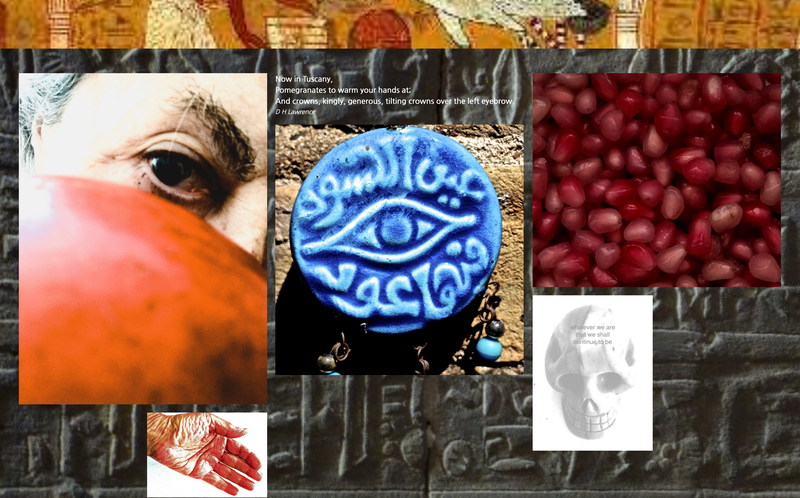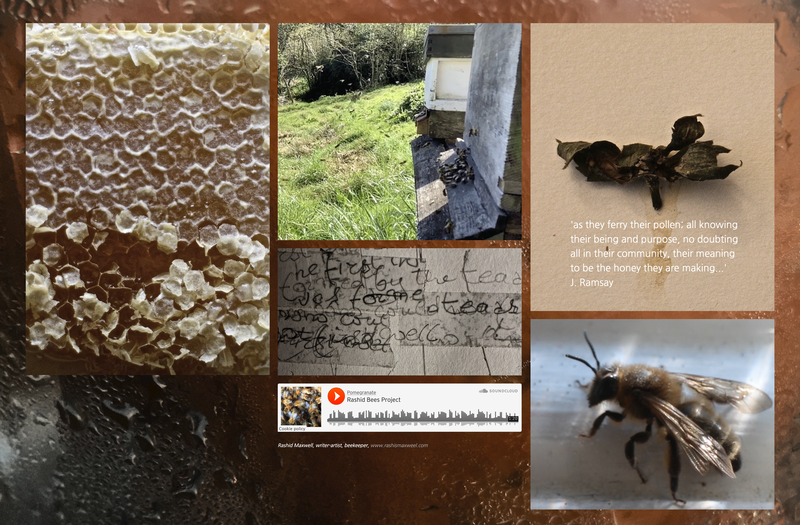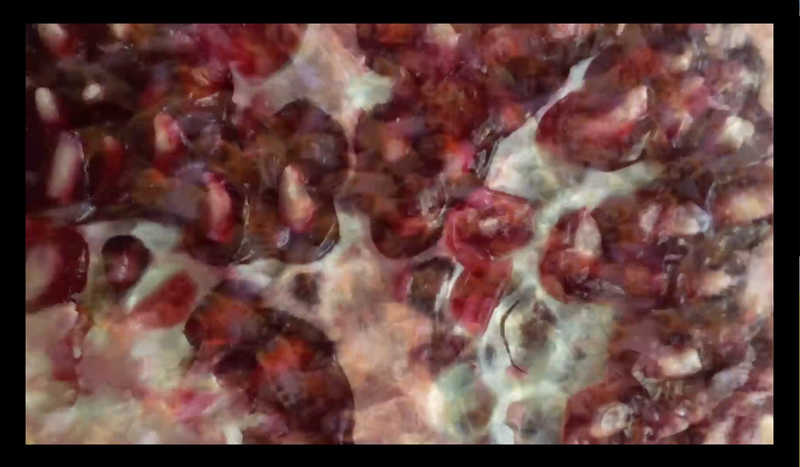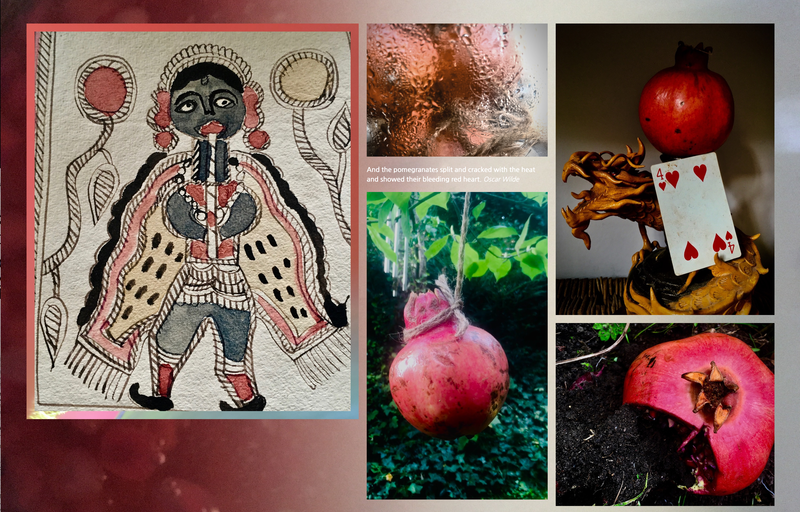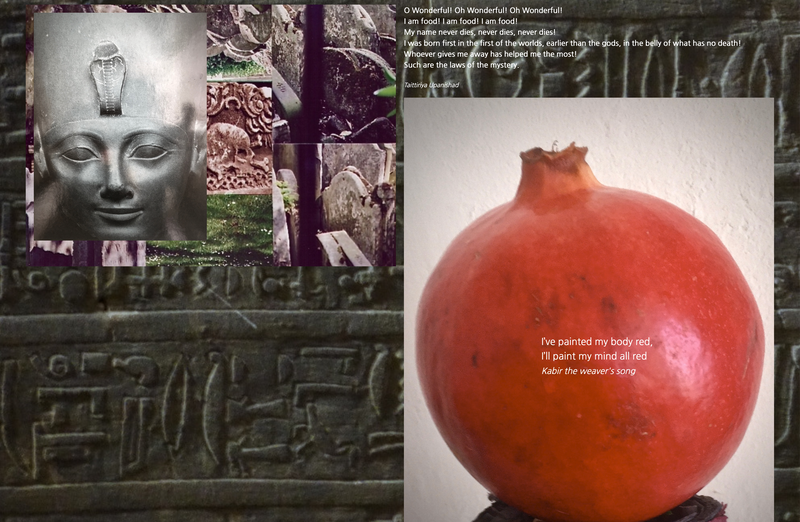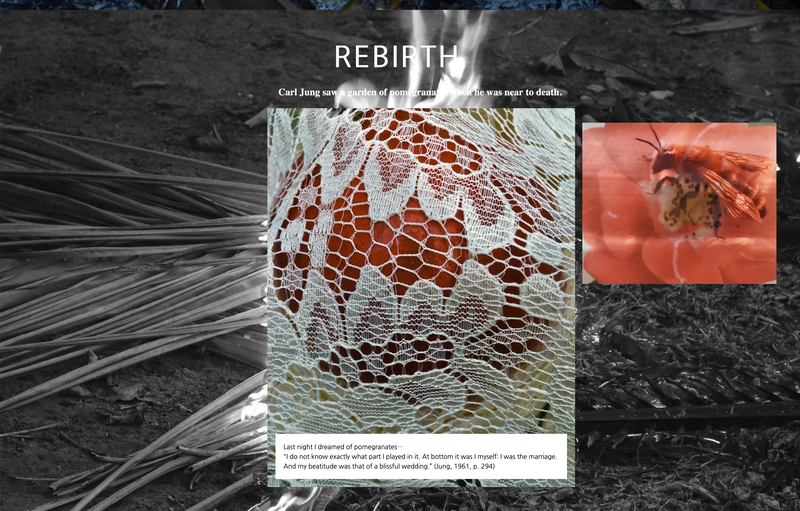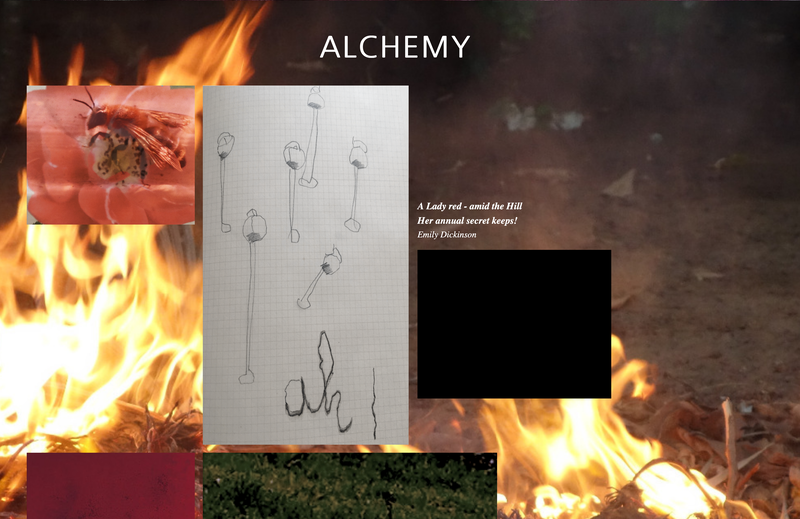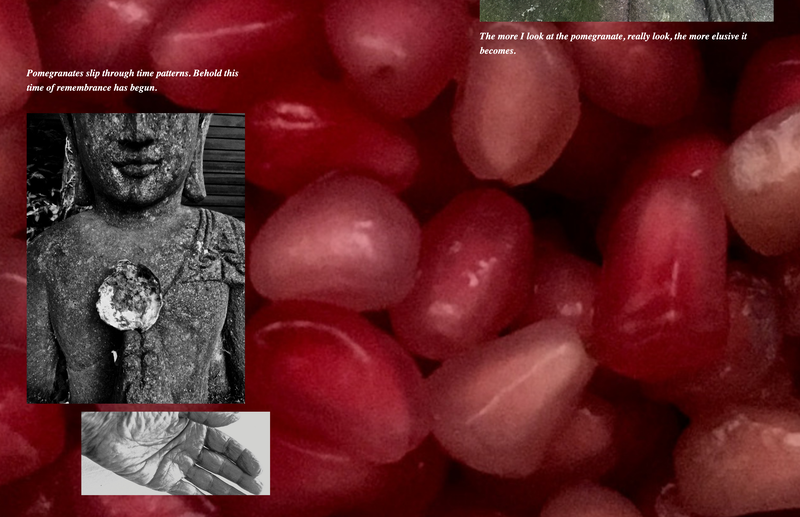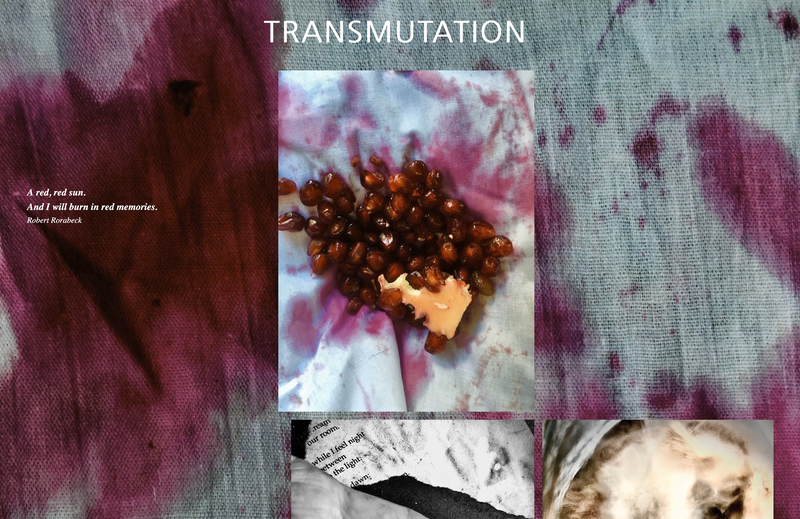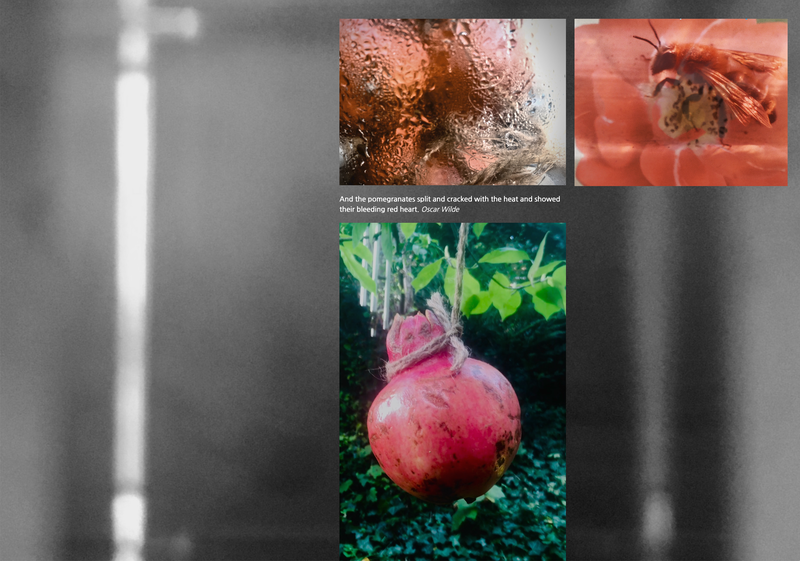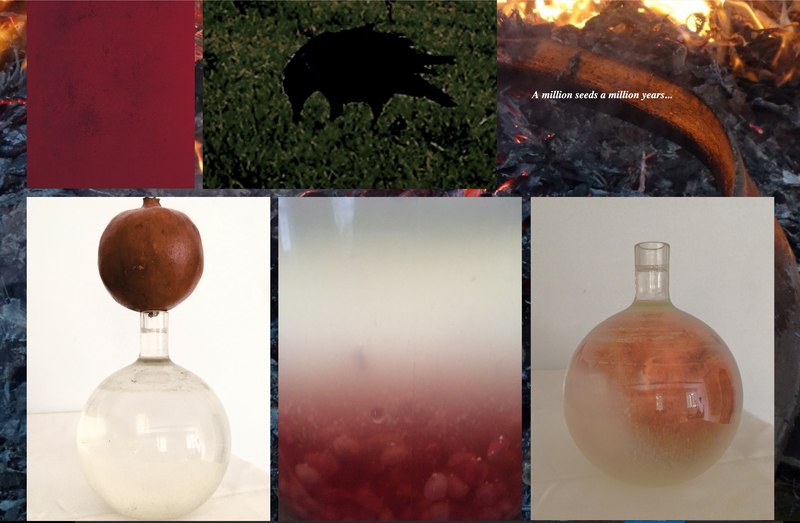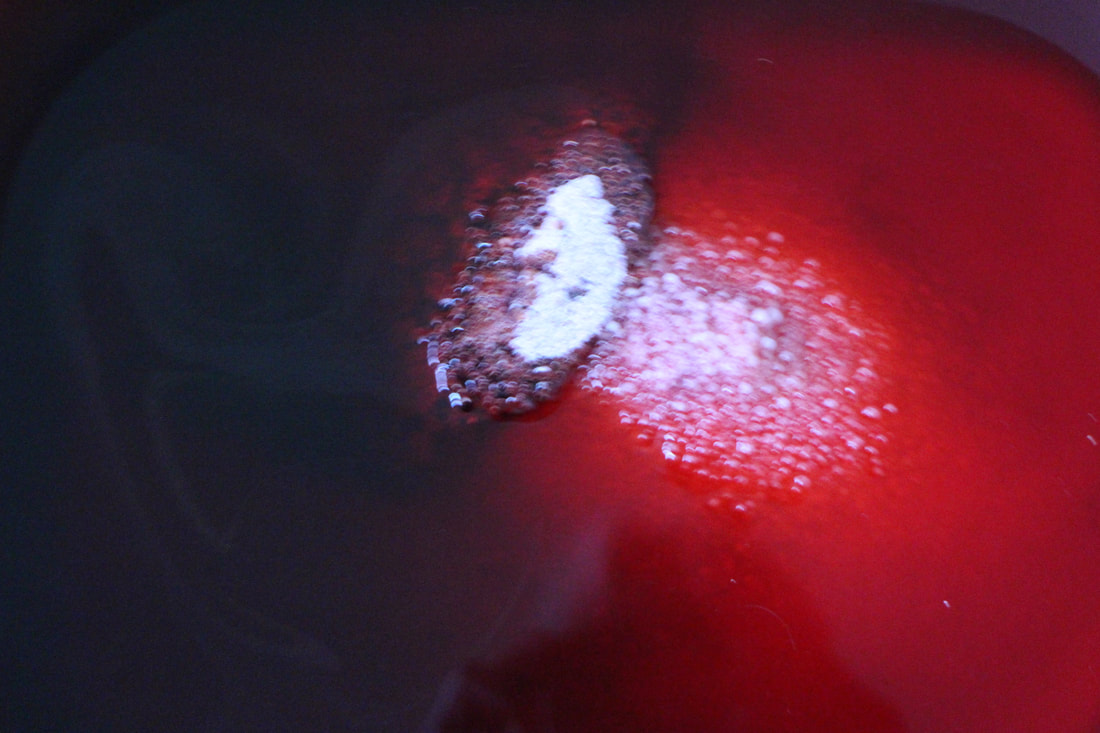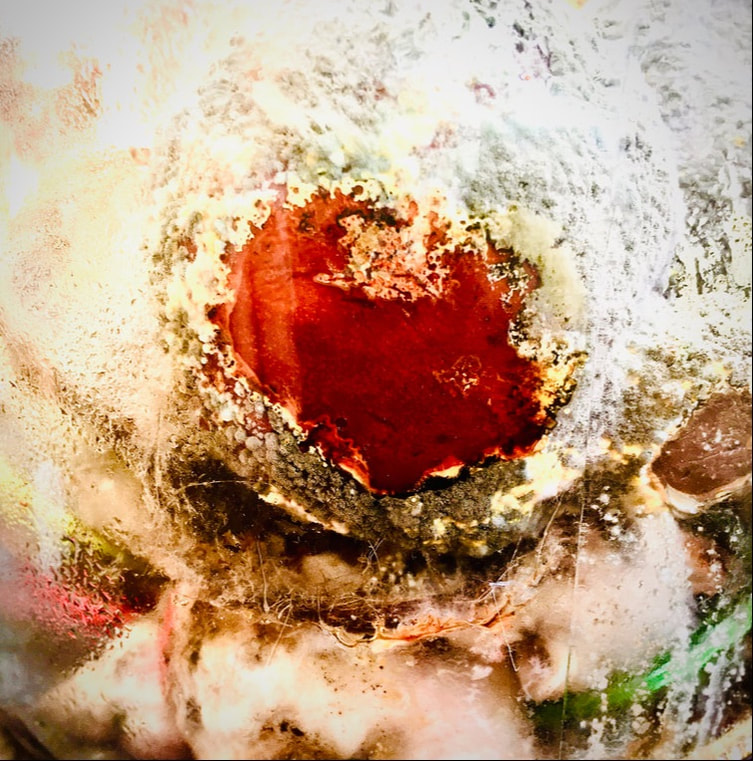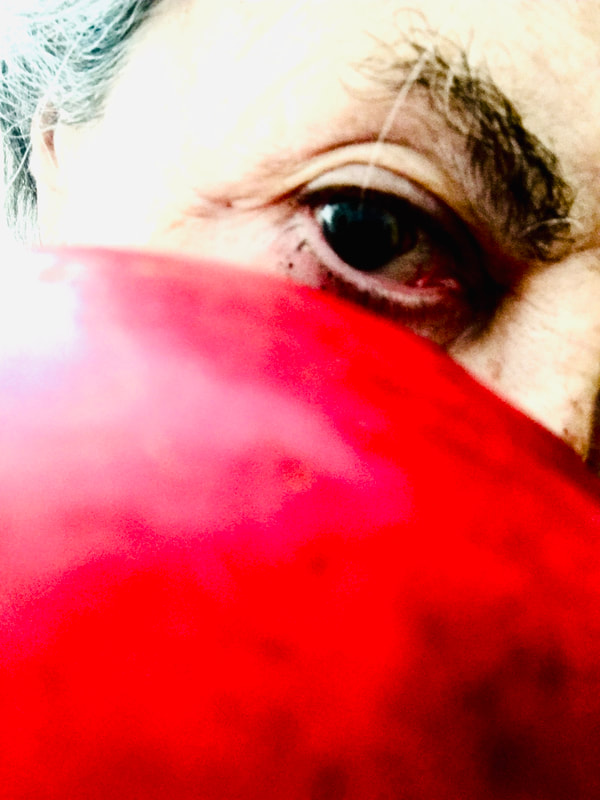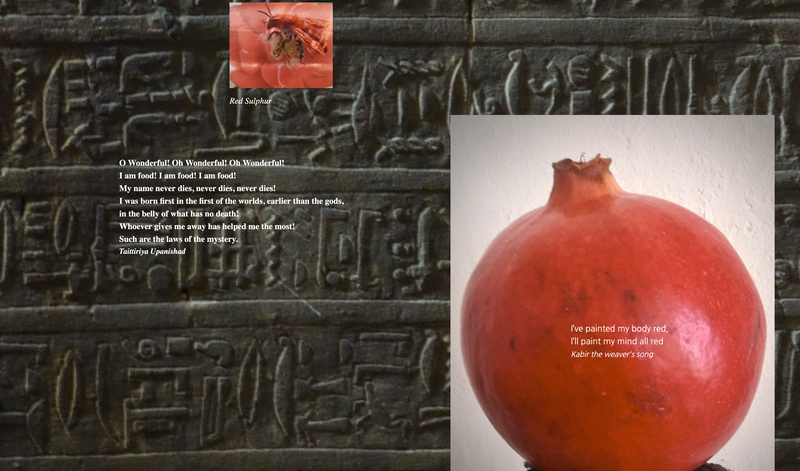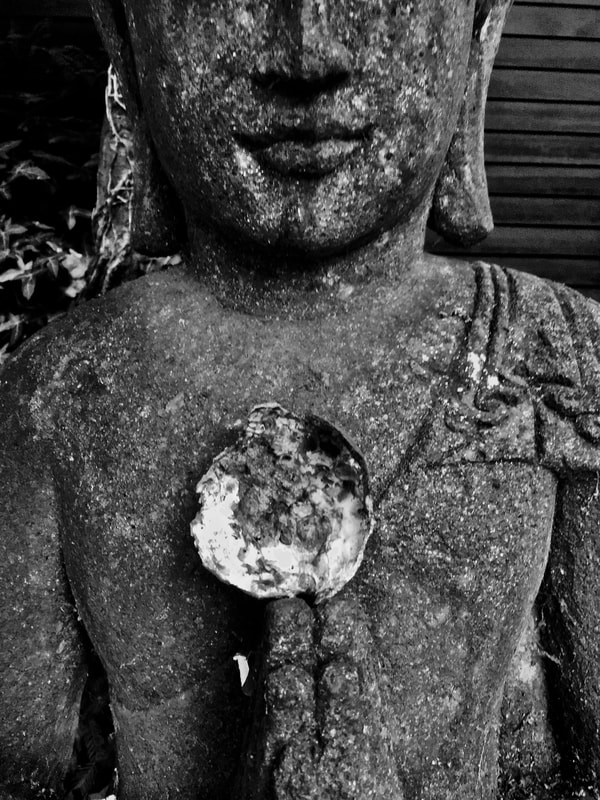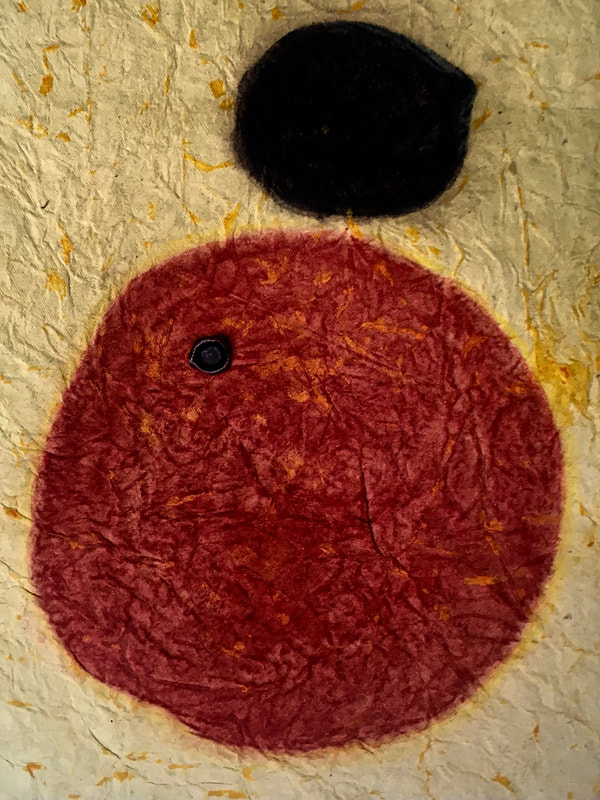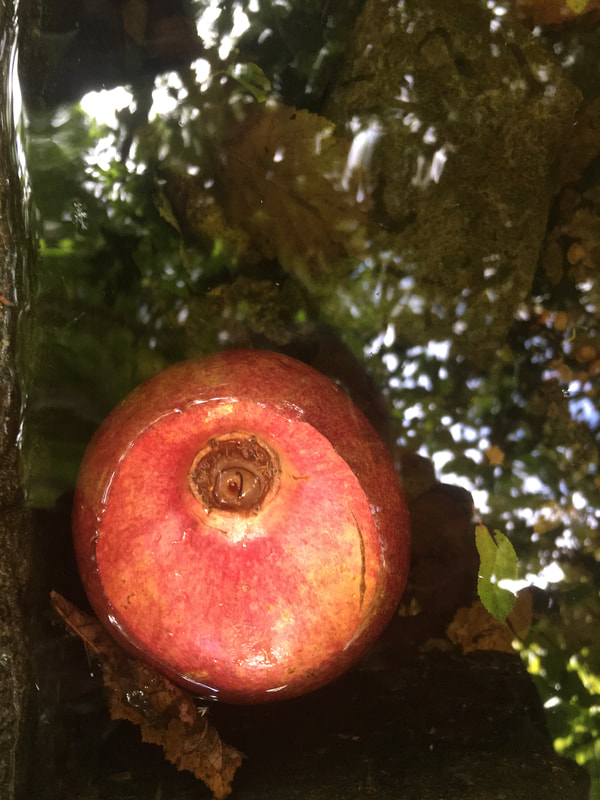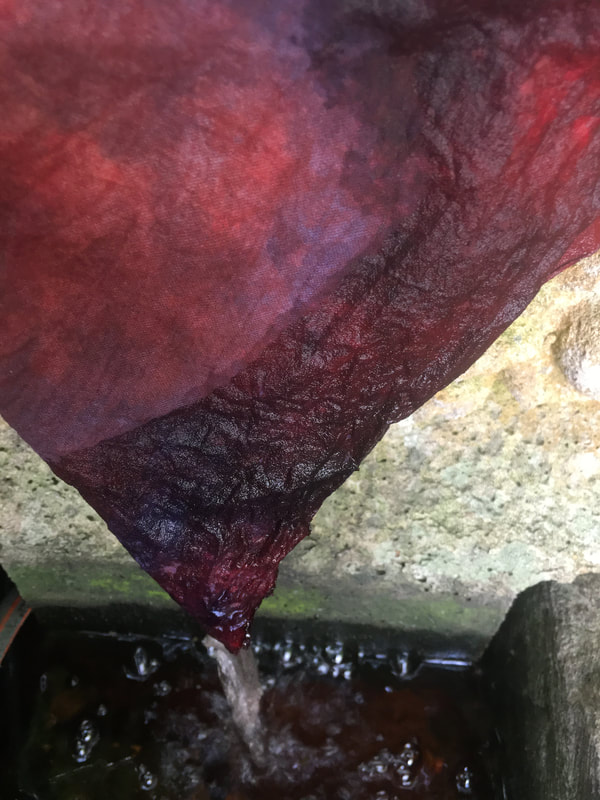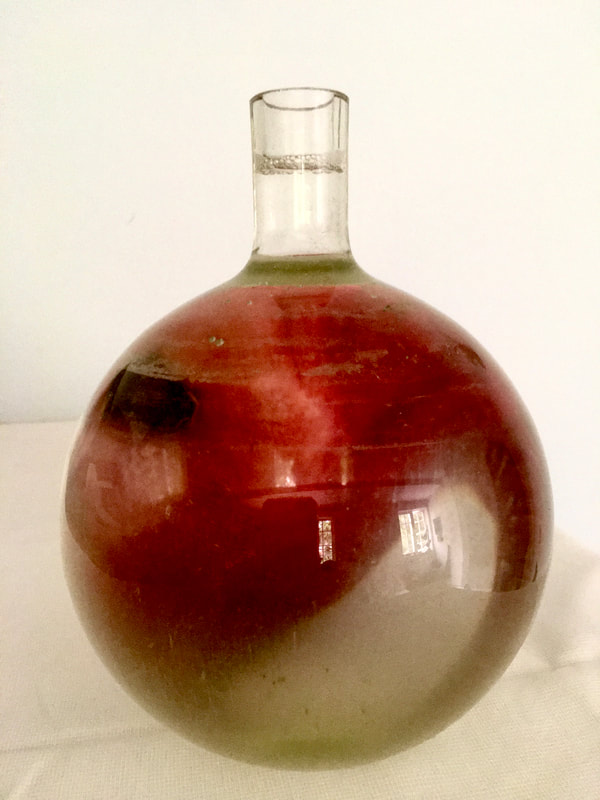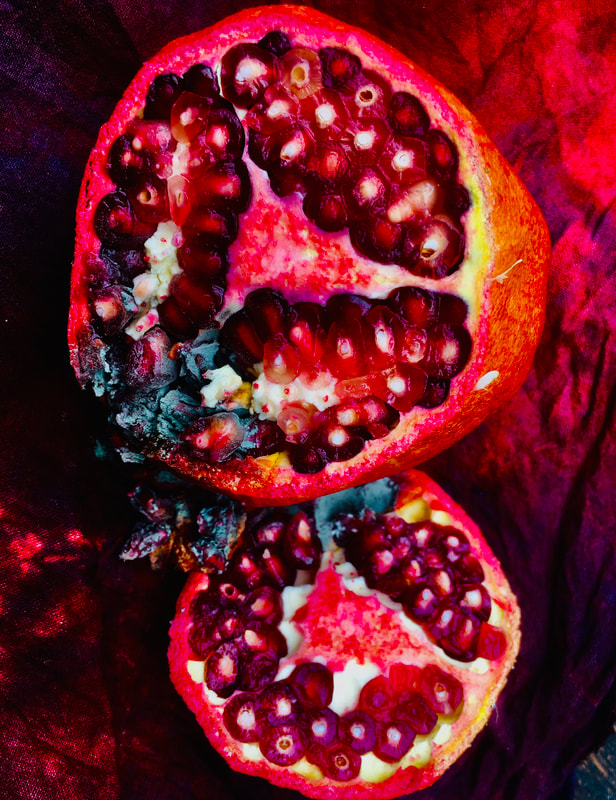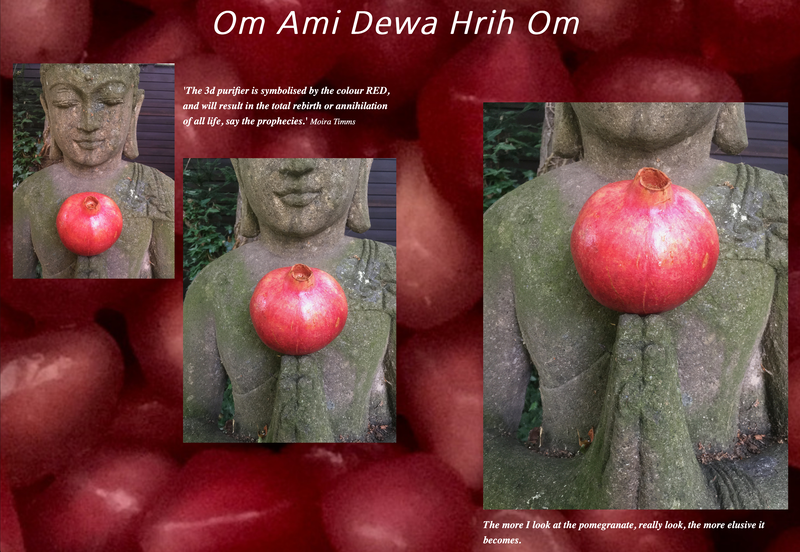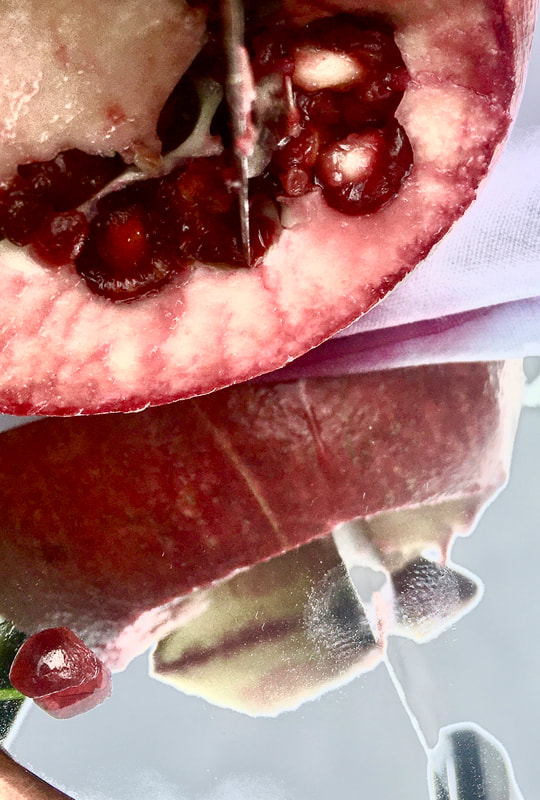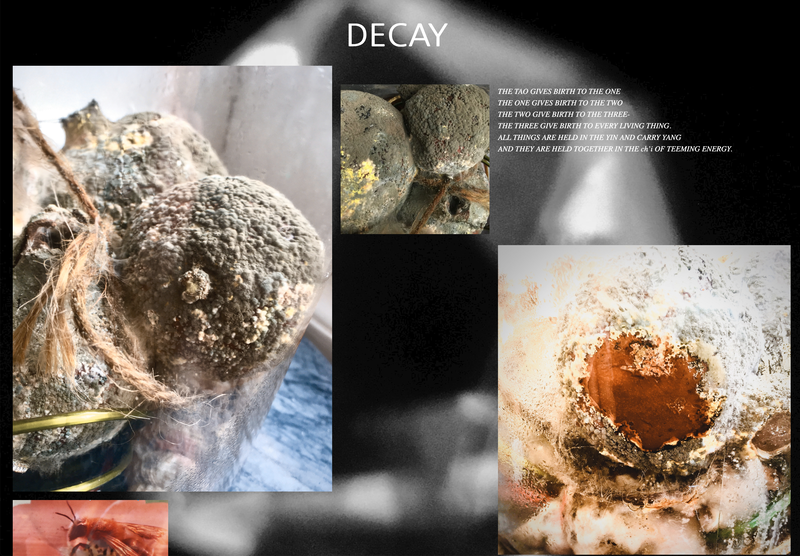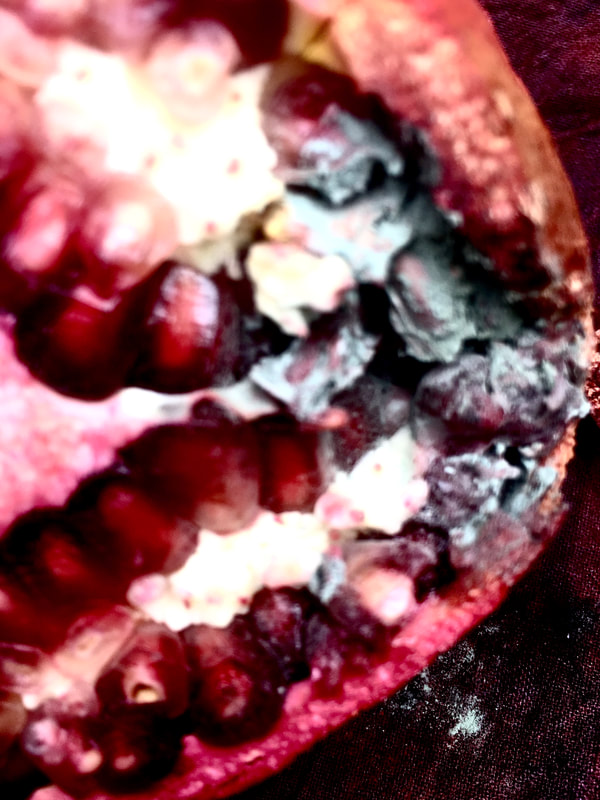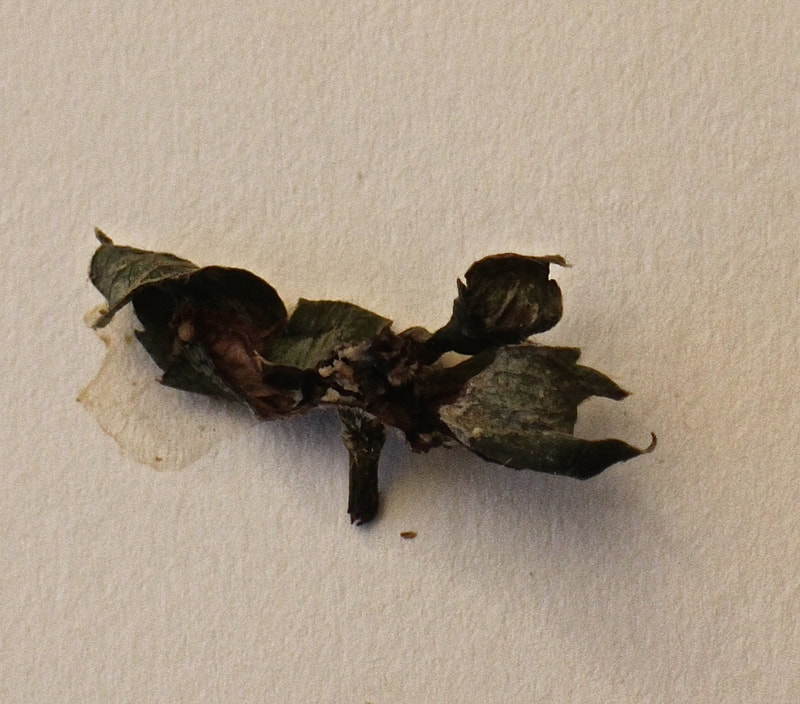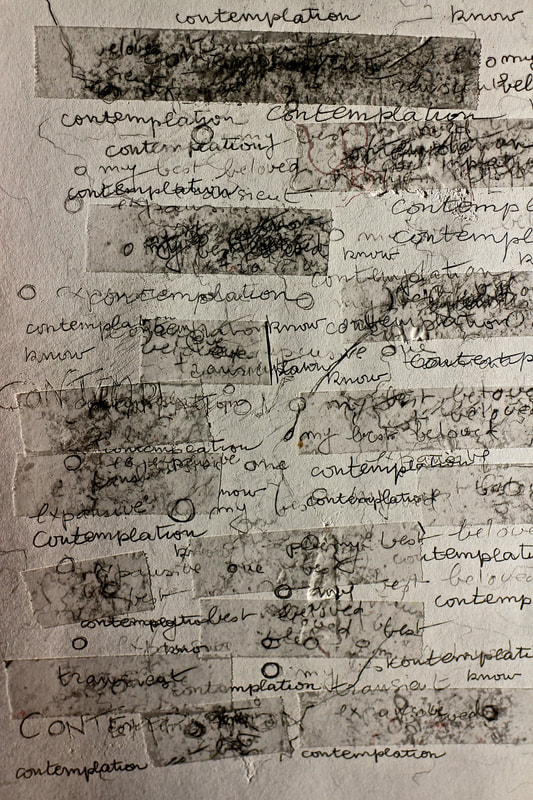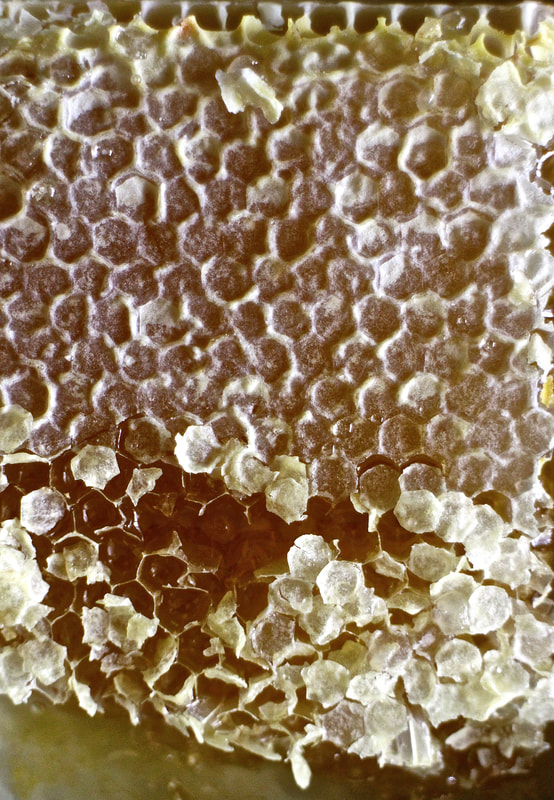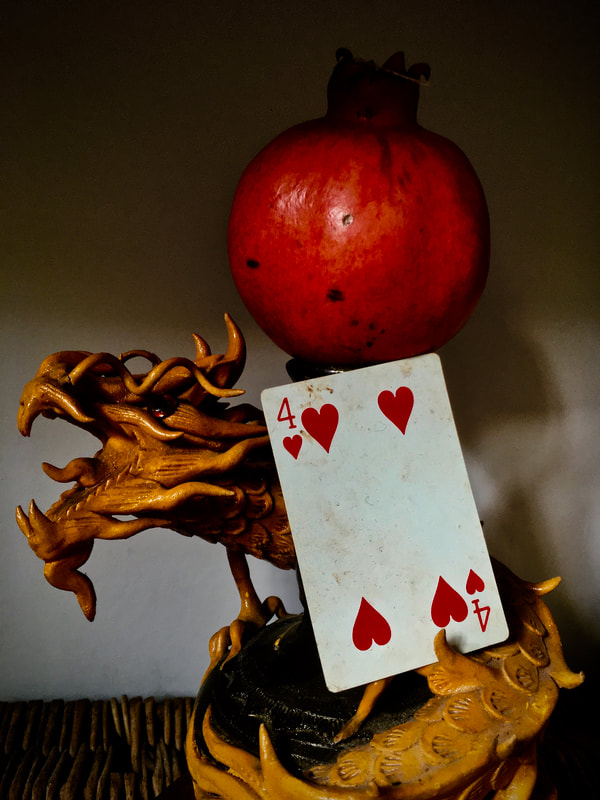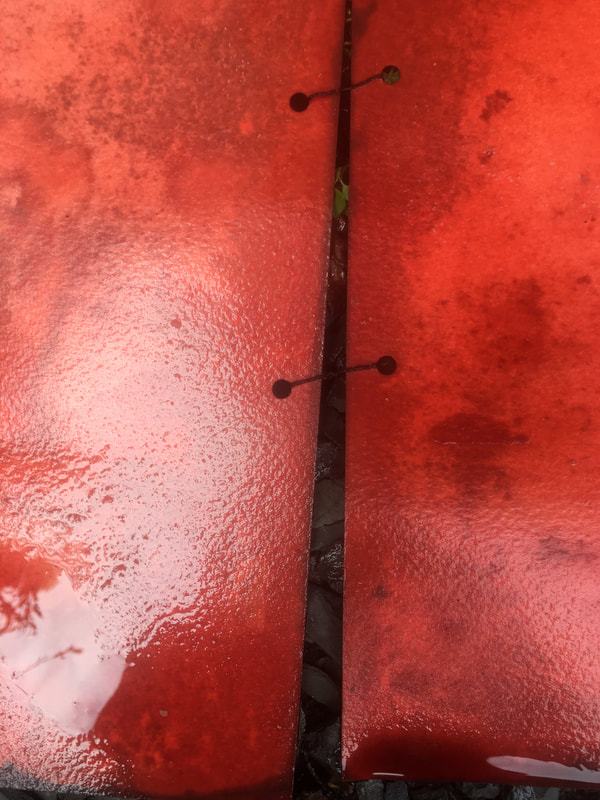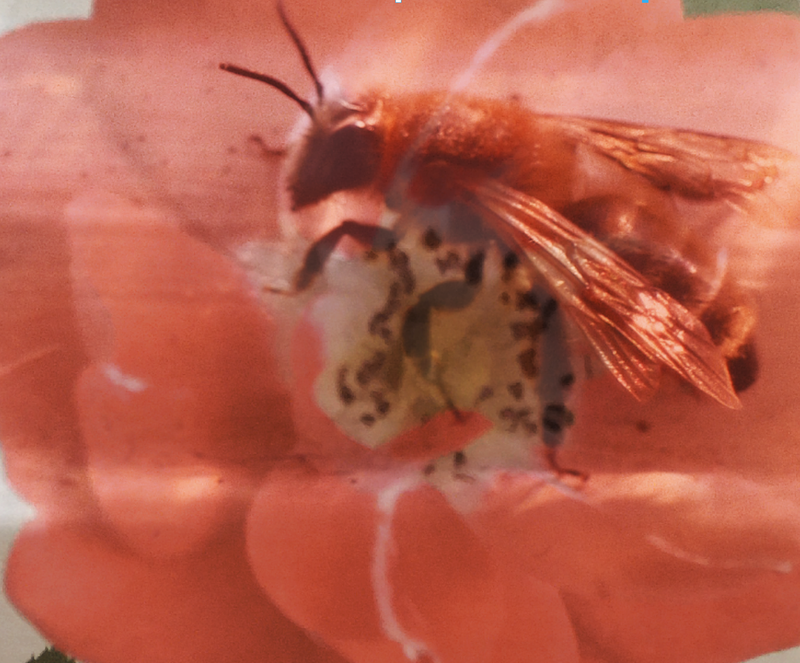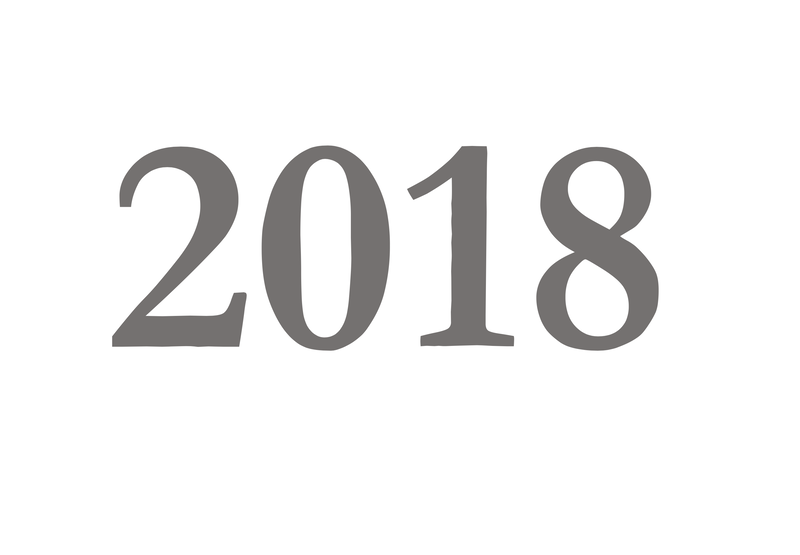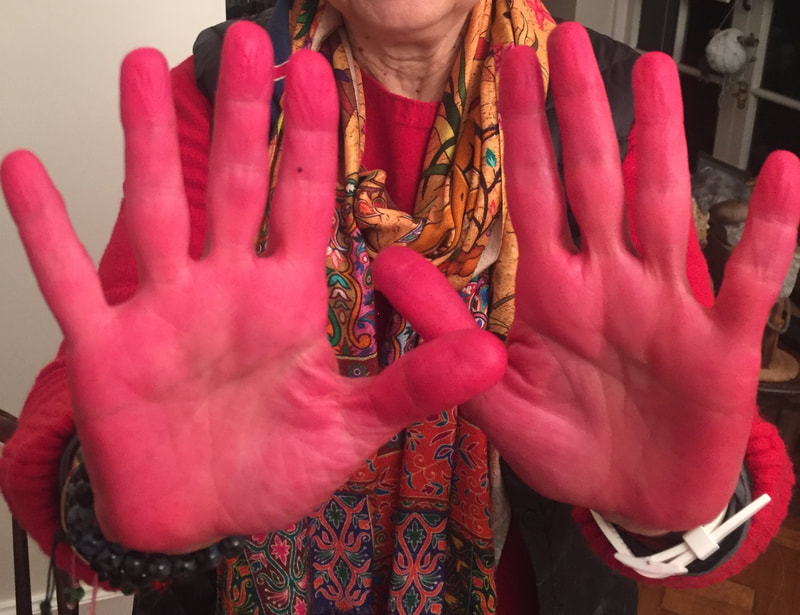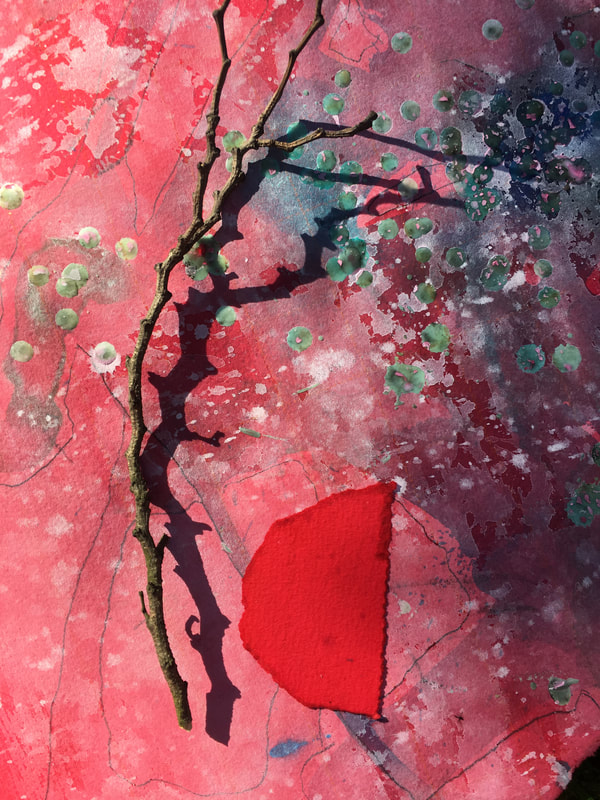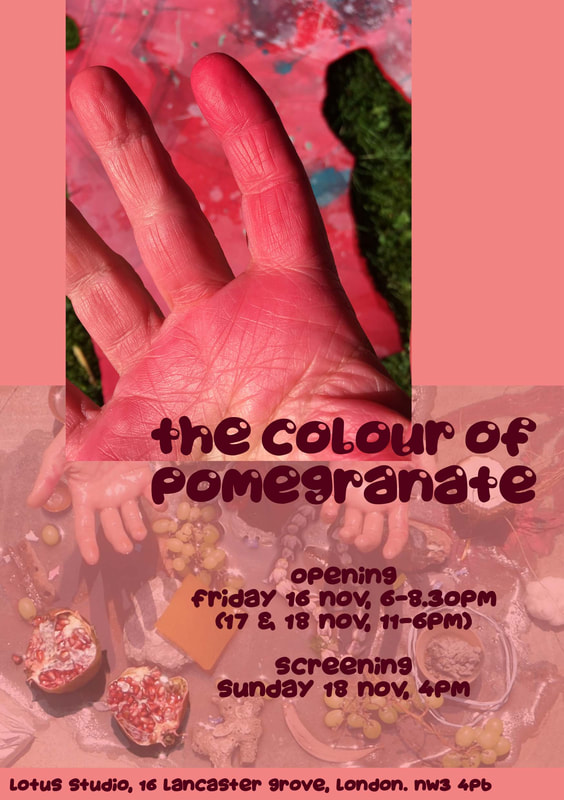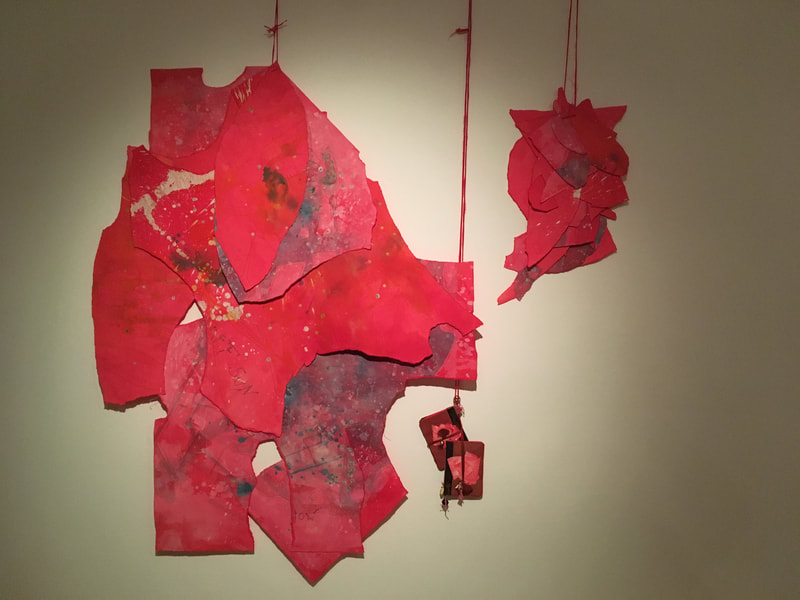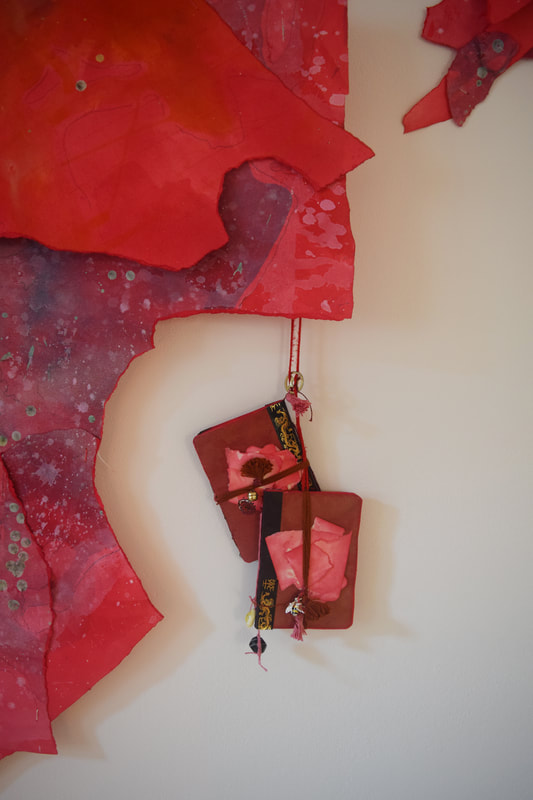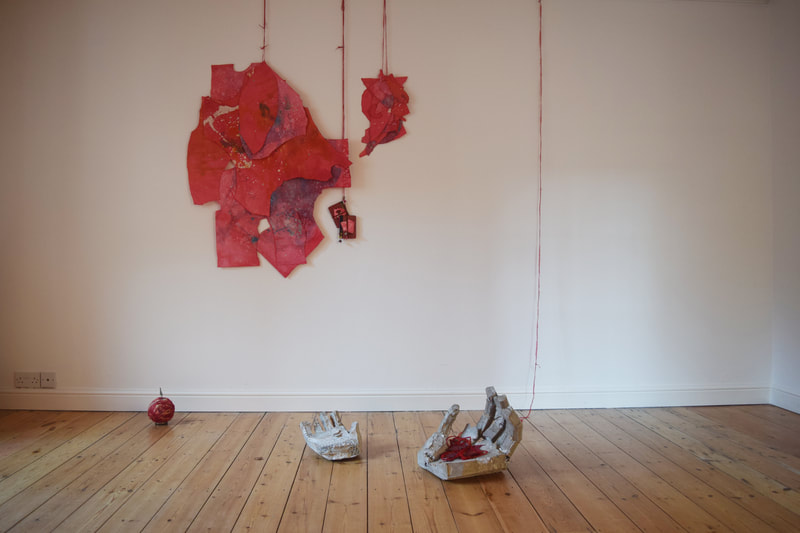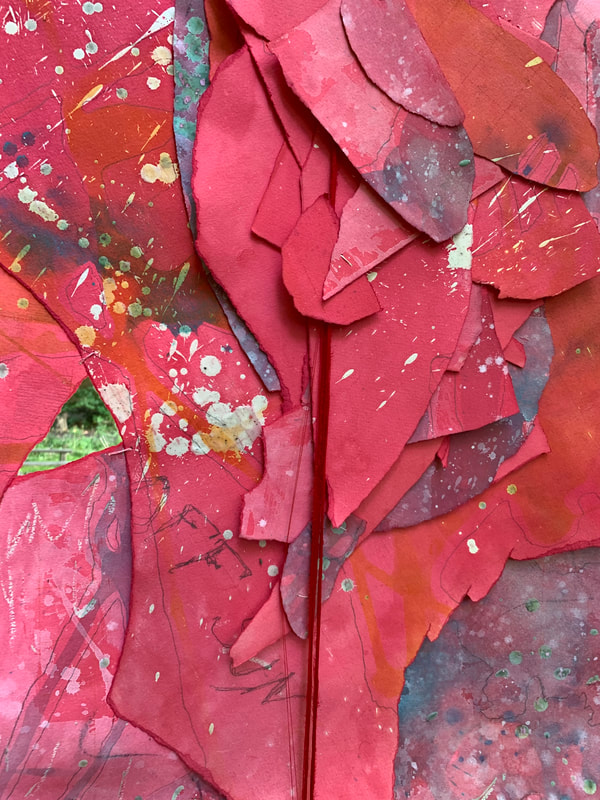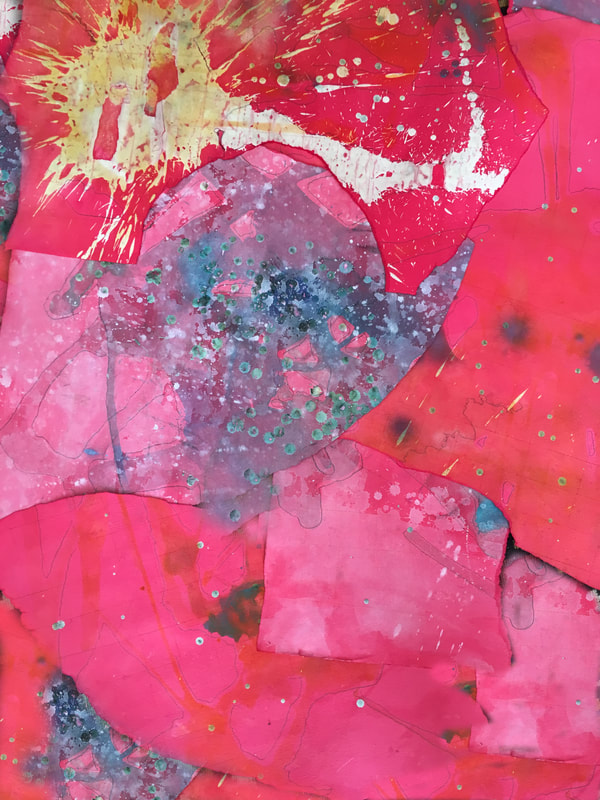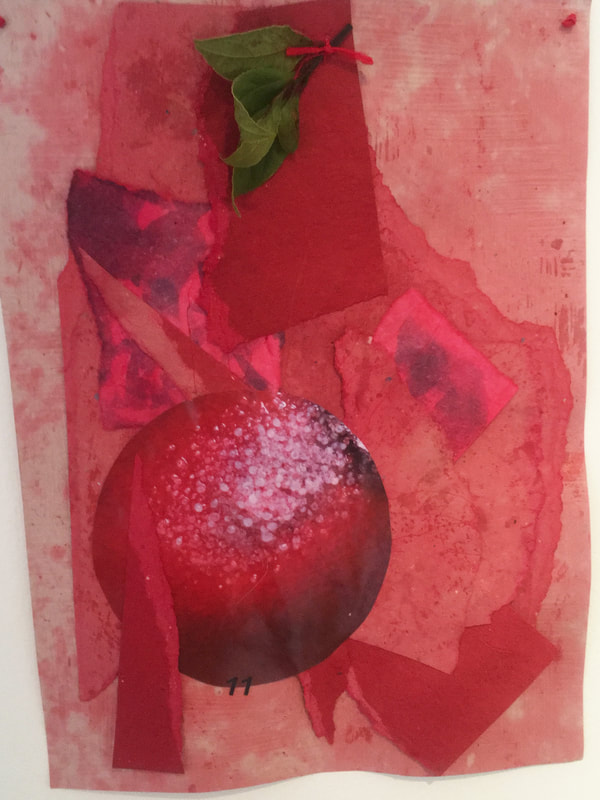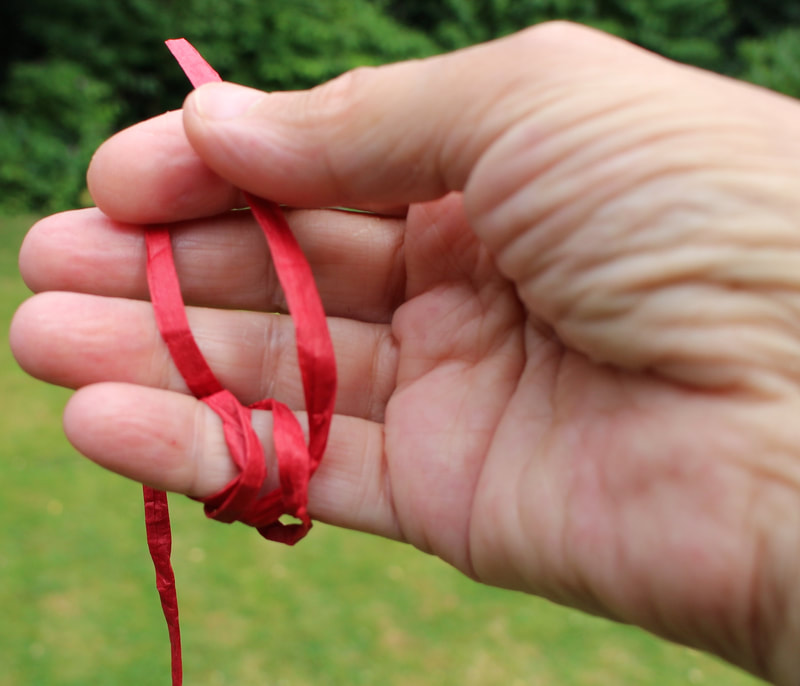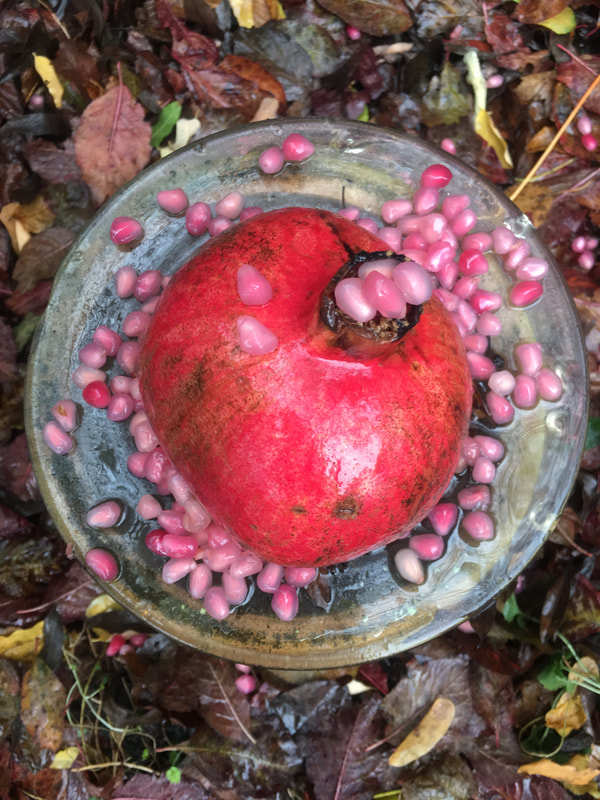THE COLOUR OF POMEGRANATES, PART-2
Introduction
"The Colour of Pomegranates, part 2—the digital space, is the continuation of a discussion that began with an exhibition in 2018, when the artist Genie Poretzky-Lee emailed an image of her pink stained hands to Rosalind Wilson as she was casting a sculpture of an open pomegranate. A connection was made that extended outwards to a shared appreciation of the Soviet director, Sergei Parajanov and his film, The Colour of Pomegranates, a visual poem dedicated to the life of 18th-century Armenian poet and troubadour Sayat-Nova, (1712 –1795).
The original exhibition had a womb-like quality, where the artworks played off each other, as if carrying on a conversation begun by Parajanov, his film projected onto the wall at the back of the gallery and across their artworks. I moved through the sculptures, symbols utilised by Parajanov now present in the space, an open book with redacted words, dyed paper, knotted fabric, all carefully placed. But there was a sense of unease, as if there was something left unsaid, still seeking resolution. I became interested in how this dialogue could be developed into the digital space, asking whether it was possible for the work to form the basis of a number of propositions connecting our rapidly changed and changing relationships with digital technologies and art forms." (Walker, 2020)
Introduction
"The Colour of Pomegranates, part 2—the digital space, is the continuation of a discussion that began with an exhibition in 2018, when the artist Genie Poretzky-Lee emailed an image of her pink stained hands to Rosalind Wilson as she was casting a sculpture of an open pomegranate. A connection was made that extended outwards to a shared appreciation of the Soviet director, Sergei Parajanov and his film, The Colour of Pomegranates, a visual poem dedicated to the life of 18th-century Armenian poet and troubadour Sayat-Nova, (1712 –1795).
The original exhibition had a womb-like quality, where the artworks played off each other, as if carrying on a conversation begun by Parajanov, his film projected onto the wall at the back of the gallery and across their artworks. I moved through the sculptures, symbols utilised by Parajanov now present in the space, an open book with redacted words, dyed paper, knotted fabric, all carefully placed. But there was a sense of unease, as if there was something left unsaid, still seeking resolution. I became interested in how this dialogue could be developed into the digital space, asking whether it was possible for the work to form the basis of a number of propositions connecting our rapidly changed and changing relationships with digital technologies and art forms." (Walker, 2020)

